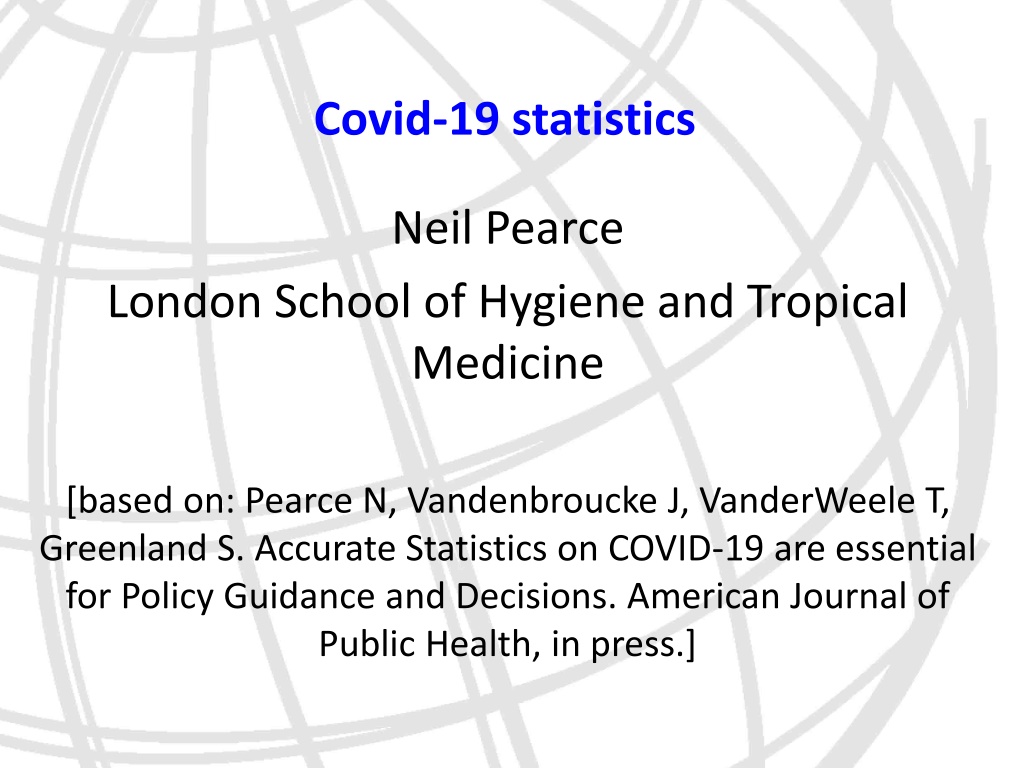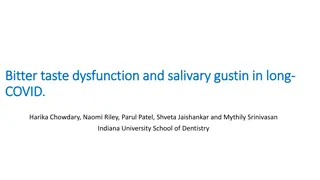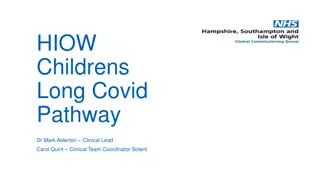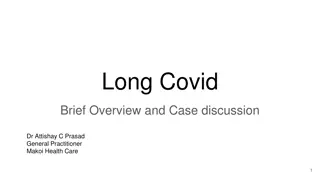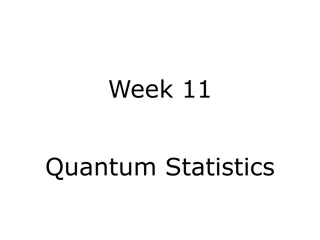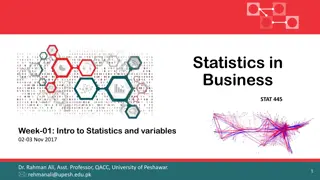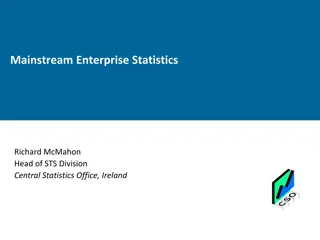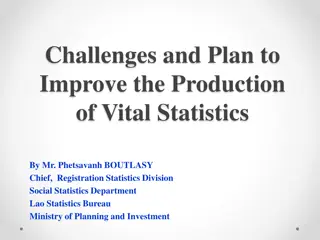Understanding COVID-19 Statistics and Implications for Policy Decisions
Delve into the importance of accurate COVID-19 statistics for guiding policy decisions, exploring the nuances of counts versus rates in small countries like The Netherlands and Belgium. Learn about the impact of population size on death rates and the necessity of using rates for international comparisons amid the pandemic.
Download Presentation

Please find below an Image/Link to download the presentation.
The content on the website is provided AS IS for your information and personal use only. It may not be sold, licensed, or shared on other websites without obtaining consent from the author. Download presentation by click this link. If you encounter any issues during the download, it is possible that the publisher has removed the file from their server.
E N D
Presentation Transcript
Covid-19 statistics Neil Pearce London School of Hygiene and Tropical Medicine [based on: Pearce N, Vandenbroucke J, VanderWeele T, Greenland S. Accurate Statistics on COVID-19 are essential for Policy Guidance and Decisions. American Journal of Public Health, in press.]
Pearce N, Vandenbroucke J, VanderWeele T, Greenland S. Accurate Statistics on COVID-19 are essential for Policy Guidance and Decisions. American Journal of Public Health, in press.
Covid-19 statistics Counts vs rates Selection and misclassification What do we need to do?
Calculation of Covid-19 statistics Small countries like The Netherlands, and Belgium look like they are doing very well, and are behind countries such as Italy and the UK But actually they have very high death rates when you take their small population into account Counts are useful when an epidemic is getting started, and you can continue to make useful comparisons within a country Once an epidemic is established, you need to use rates for international comparisons
Covid-19 statistics Counts vs rates Selection and misclassification What do we need to do?
Covid-19 statistics Population = P
Covid-19 statistics Population = P Infected = I
Covid-19 statistics Symptoms = S Population = P Infected = I
Covid-19 statistics Symptoms = S Test+ves Population = P Infected = I
Covid-19 statistics Death = D; test-positive death =D* Symptoms = S Test+ves Cases (T+) Deaths Population = P Infected = I P is the only variable that we know (more-or-less) correctly The key thing that we don t know is the number infected (I)
Example of misclassification Tests for active infection (PCR) typically have: Sn=70%, Sp=99%, prevalence = 3% Infected Not- infected Total Test Yes No 210 90 97 9603 307 9693 Total 300 9700 10000 Positive predictive value (PPV) = 210/307 = 68%
Example of misclassification Tests for past infection typically have much worse Sn and Sp Tests are usually validated by comparing hospitalised (severe) cases with healthy controls In this situation they do well (Sn>90%, Sp about 99%), but almost anything would (asking about symptoms would do just as well) The situation is completely different when these tests are used in the field
Calculation of Covid-19 statistics Attack rate (cases/population) = I/P Case fatality rate (CFR) (test+ve deaths/diagnosed cases) = D*/T+ Infection fatality rate (IFR) (test+ve deaths/infected) = D*/I Population fatality rate (deaths/population) = D/P All of these statistics are important, but the key thing that is important and missing is the Infection Fatality Rate, because we don t know the number infected (I)
Covid-19 statistics Counts vs rates Selection and misclassification What do we need to do?
What do we need to do? Statistics about Covid-19 frequency are being used to make major decisions as to which countries are 'in the lead', if we should 'lockdown' and when, what to do when the lockdown is over, whether herd immunity is an acceptable option, etc. These different policy options are supported by models which use the same data, but produce different forecasts, even when using the same data
What do we need to do? This is because we don t have the basic information needed to build reliable forecasts. This does not mean that we should not be making decisions we have to but we could make much better decisions, or at least understand the options better, if we had better data The key thing we don t know is the proportion of the population that has been infected (I)
Key problems with current statistics Many published graphs just use the number of deaths in each country Most testing is done in people with symptoms so does not estimate the true population attack rate (I/P) Most population surveys are using convenience selection, not representative of P The tests have mostly not been validated in the field
Problems of antibody testing Suppose: 60 sensitivity; 95% specificity Prevalence = 10% True positive True negative Total Test+ve 60 45 105 Test-ve 40 855 895 Total 100 900 1000 Positive predictive value = 60/105 = 57%
What do we need to do now? Use graphs of rates instead of, or in addition to, graphs of counts Test the general population, not just people with symptoms; we need repeated representative sampling of diverse parts of the general population Each test needs to be fully validated in the field
What do we need to do longer term? Increased recognition of the need for disease surveillance systems. Ensure that good surveillance systems are in place not only for known diseases, but ready to be activated for new diseases such as Covid Disease surveillance and descriptive epidemiology will continue to be the essential foundation for good epidemiology and good public policy.
Covid-19 statistics Neil Pearce London School of Hygiene and Tropical Medicine [based on: Pearce N, Vandenbroucke J, VanderWeele T, Greenland S. Accurate Statistics on COVID-19 are essential for Policy Guidance and Decisions. American Journal of Public Health, in press.]
